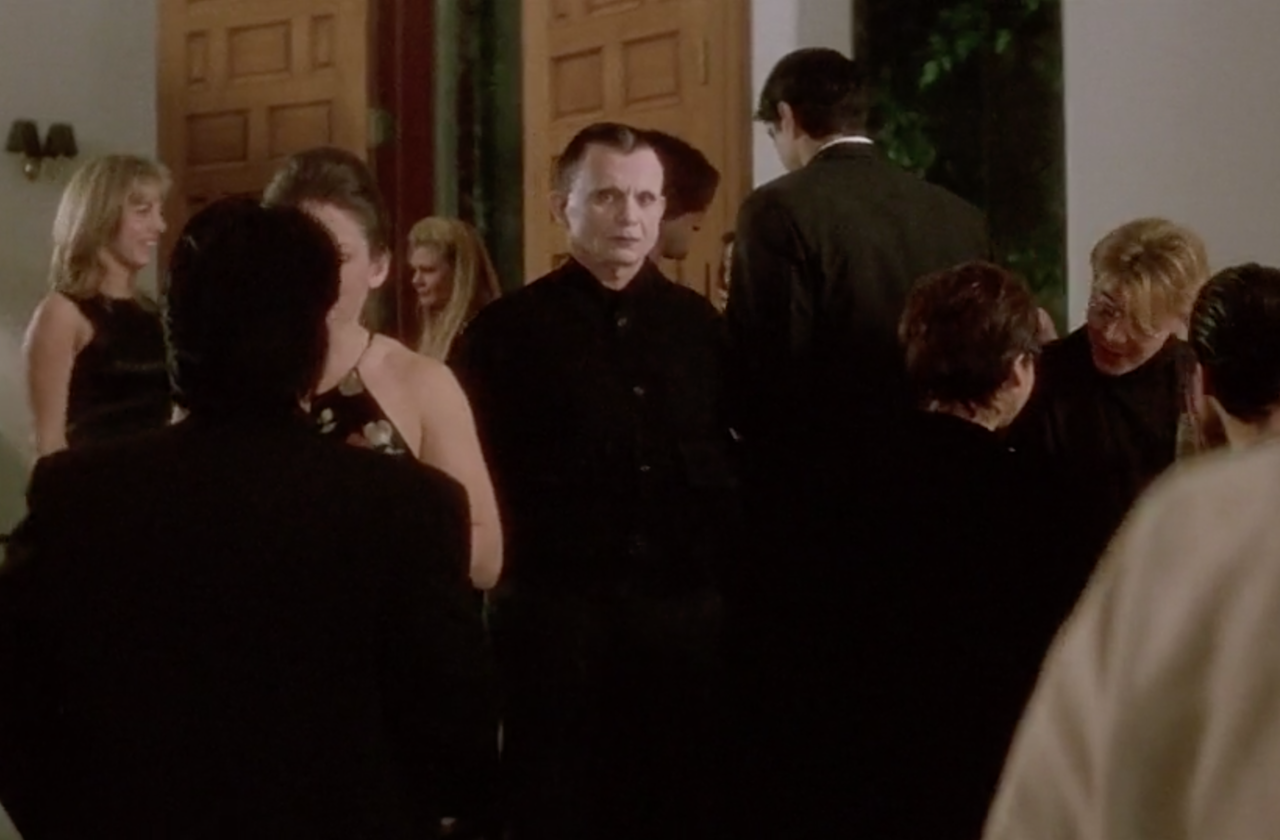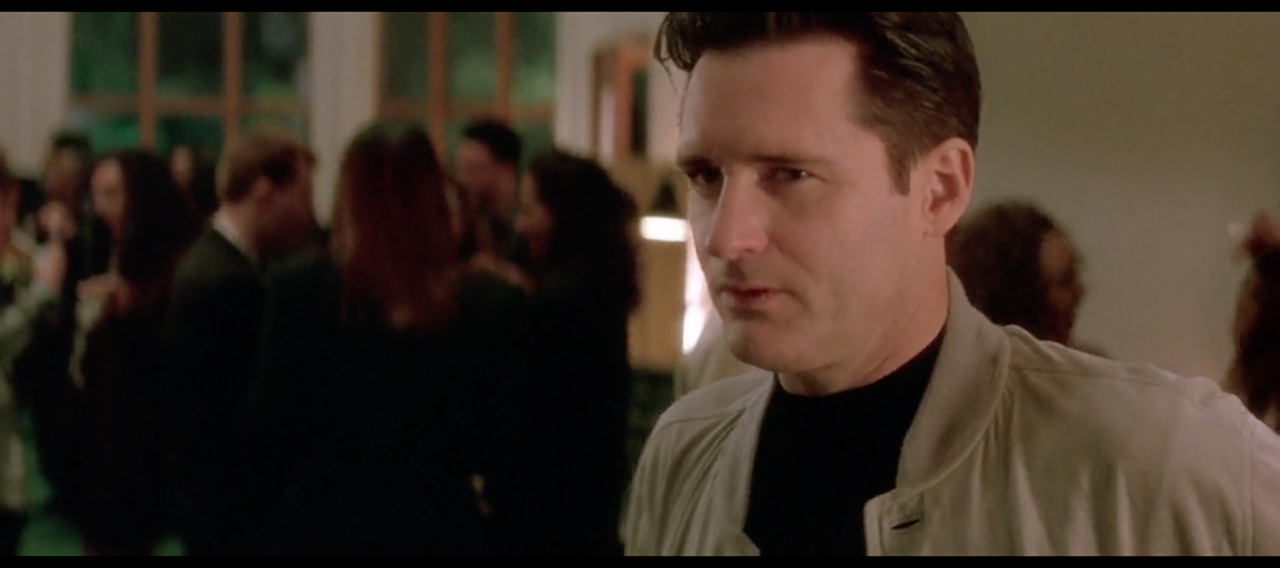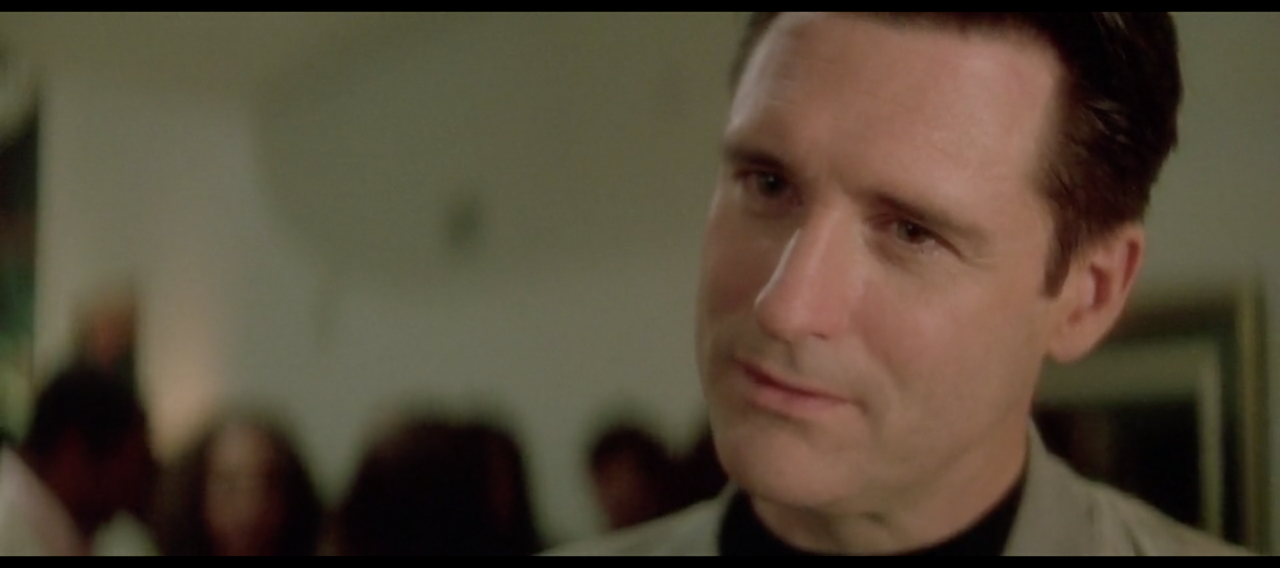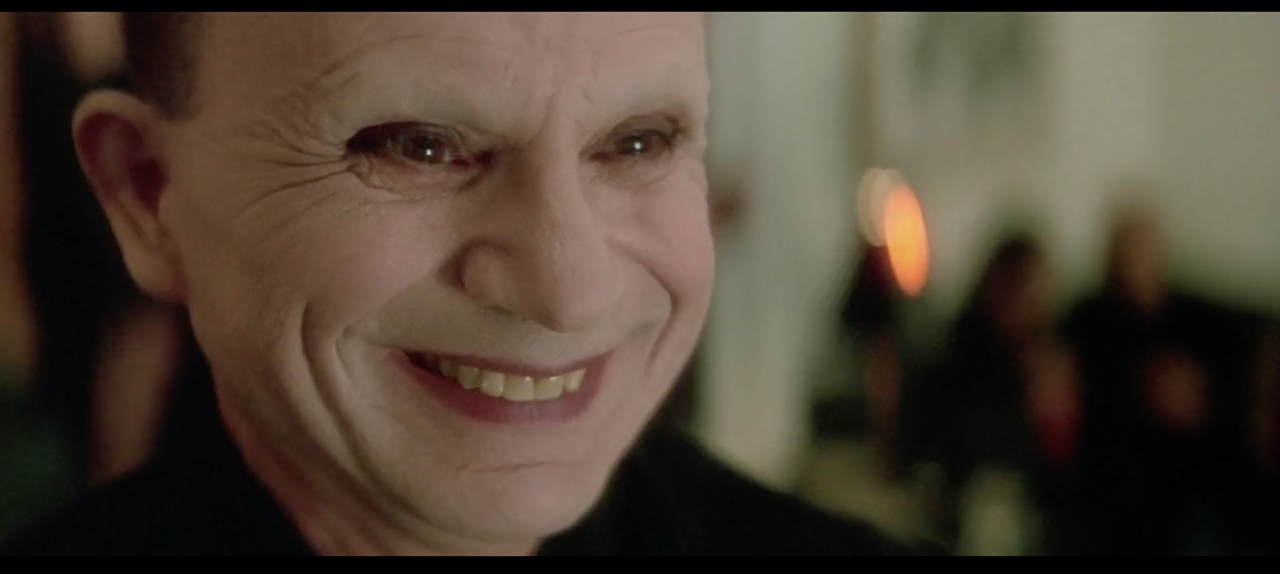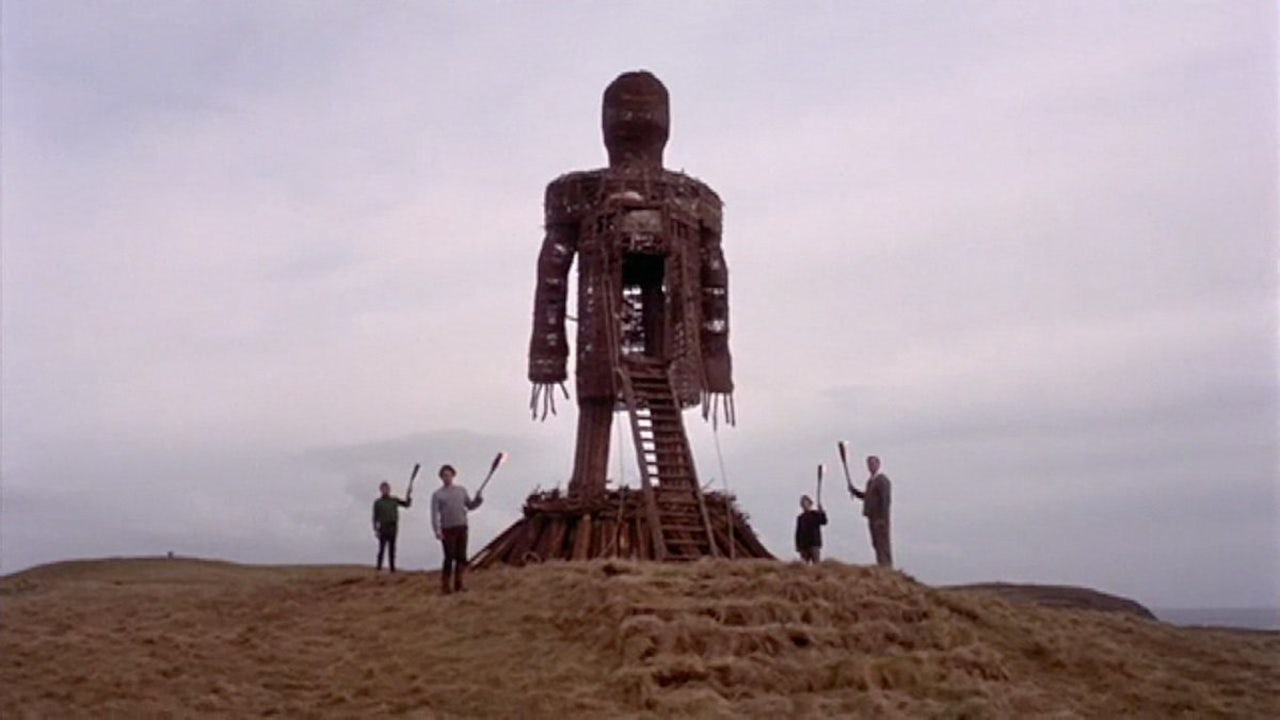When I love a horror film, I want to live in it. I mean this as a physical proposition. If a horror movie I adore has a great scene set in a memorable enclosed space, my instinct, no matter how awful the things that happen in that space are, is to walk right into it. I’d like to be in Leatherface’s bone room, in the Overlook Hotel’s elevator lobby, in the bare wooden attic where the Cenobites kill Frank Cotton, in Scarlett Johansson’s black liquid void. I want to feel the walls, tap the floor with my foot, smell the viscera. You know, make myself at home.
I’d eventually like to leave again, of course, which is usually what separates me from the people who do visit those places within the movies themselves. But there’s weird, cold comfort in those spaces. They’re inviting, to me anyway, and it is not my custom to go where I am not wanted.
From the Red Room in Twin Peaks to its blue counterpart Club Silencio in Mullholland Drive, David Lynch has created many of these spaces. As a director, Lynch is to ambient room tone what Martin Scorsese is to gangsters listening to “Gimme Shelter.” Evoking a sense of space, and what it’s like to be within four particular walls (curtains optional), is a major part of his project.
In one such space, he even threw a party.
There’s a party scene in his 1997 film Lost Highway I’d pay dearly to attend, in an L.A.-modern house filled with black-clad revelers and Barry Adamson’s uptempo trip-hop playing from the hi-fi. Perhaps you remember that party. More specifically, perhaps you recognize one of its guests.
This is the Mystery Man, played by Robert Blake. How he fits into the story of Lost Highway — co-written by Lynch and Barry Gifford and inspired in part by Lynch’s fascination with O.J. Simpson’s apparent conviction that he hadn’t killed anyone at all — is difficult to describe. In Lost Highway, Fred Madison (Bill Pullman) is a jazz musician who seemingly murders his wife in the first third of the film, and before somehow transforming into a completely different person named Pete Dayton (Balthazar Getty) for the remainder. The Mystery Man represents Madison's murderous instincts; he spends the rest of the movie haunting Dayton. He’s played by Robert Blake, who devised the character’s look himself: greasepaint-white skin, center-parted buzzcut, all black everything except his eyebrows, which have been shaved off. I’ll note here for the record that Blake has something else in common with Uncle Juice besides this movie.
In practical terms the Mystery Man is the equivalent of Twin Peaks’ Black Lodge spirits (Bob, the Woodsmen, and so on), or the person behind the Winkie’s in Mullholland Drive. He’s a thing that should not be, a monumental horror image. Especially the first time you watch Lost Highway, he is not easy to look at for very long. And he has a question for Fred:
“We’ve met before, haven’t we?”
That’s his opener. You always see this line, when quoted, with a question mark, but his diction says otherwise. He’s not asking if they’ve met, already an awkward bit of party conversation on its own. He’s asserting that they’ve met, forcing Fred to either rack his brain for the memory or contradict a total stranger. Right away, he’s been wrongfooted.
So the conversation goes, for a bit. The Mystery Man states the facts of their past encounter with confidence, and Fred brushes them off with a smile. Our hero’s an avant-jazz saxophonist; it’s possible this isn’t the oddest person he’s met this week. Nevermind that he’s had nightmares about his wife Renee, whom he can no longer satisfy sexually, in which she had this man’s face. Nevermind that this guy is saying they met at Fred and Renee’s austere house, where an unknown intruder has been breaking in to film them as they sleep and then dropping off the videotapes at their front door. Nevermind that all the music and party chatter has faded out and all we hear beneath the dialogue is the proverbial ominous whoosh. We may know we’re watching something frightening, but Fred doesn’t, not yet.
“As a matter of fact,” the Mystery Man says regarding the house, “I’m there right now.”
That’s where the scene kicks into high fear. The Mystery Man is asserting that he is… not where he is, not where we’re looking at him right at that moment. He’s underlining his impossibility, his thing-that-should-not-be-ness.
To prove it, he hands Fred his cellphone and tells him, “Call me.” Fred calls his house, and the Mystery Man, now a voice on the other end of the line as well as a person standing right in front of him, answers. When Fred demands to know how he got inside, his response is out of a Bela Lugosi movie: “You invited me. It is not my custom to go where I am not wanted.” Suddenly centuries of vampiric mythology (the need to be invited into a home is a cornerstone of nosferatu lore) are poured into Lynch’s Black Lodge template.
“Who are you?” Fred asks, and the Mystery Man — both of him — laughs, in stereo.
He retrieves his phone. Smiling and bobbing his head, as if recalling a private joke, he says “It’s been a pleasure talking to you.” He turns and walks away. He hasn’t left my head since.
I’ve thought a lot about what makes this scene so unnerving in the 20+ years since I first saw it. There’s the monumental horror-image aspect, of course, and the character’s not-unrelated resonance with other Lynch monsters. There’s Blake’s performance, which is convincing enough to prejudice a jury. There’s the dumbfounded way in which Pullman’s hipster doofus Fred reacts to it all, like he’s constantly ten seconds behind realizing how bad things have gotten, which is a feeling I can both relate to and dread experiencing again. In the worst moments of my life, I find myself only gradually discovering that that’s what they are. I have a feeling Fred is thinking the same thing.
That right there — that relatability — is the floorboard for the space Lynch is constructing with this scene.
I’ve never been accosted by a demonic woodsman in the desert but I have seen people do strange and terrible things in a perfectly ordinary setting. I’ve experienced the social anxiety of being dragged to a party where I don’t know anyone, where everyone seems too cool for school, where I’ve gotten trapped in conversation with someone I’m supposed to know but don’t actually want to know at all; I can see how that could be weaponized against me if someone were determined to fuck with my head. I’ve had bizarre, scary phone conversations I’d prefer never to have had. I’ve wondered if there is someone in my house.
The Mystery Man scene functions in my mind the way the Mystery Man himself functions in the film, Lynch’s most narratively slippery work at that time and topped only by Inland Empire since. In the middle of all the counterintuitive pacing and inexplicable, moebius-strip storytelling, you have this normal space — a party, with a set of commonplace anxieties to go with it. But something unwholesome and unwelcome has been invited into it — a vampiric man who can be in two places at once, turning art-house abstraction into an old-fashioned horror movie that supercharges everyday worries and fears with supernatural energy.
And always with that maddening farewell: “It’s been a pleasure talking to you.” It has? What did I miss? What was so enjoyable about what just happened? What is he seeing that Fred and I are not? If I were at that party, would he tell me? Would I want to know?
